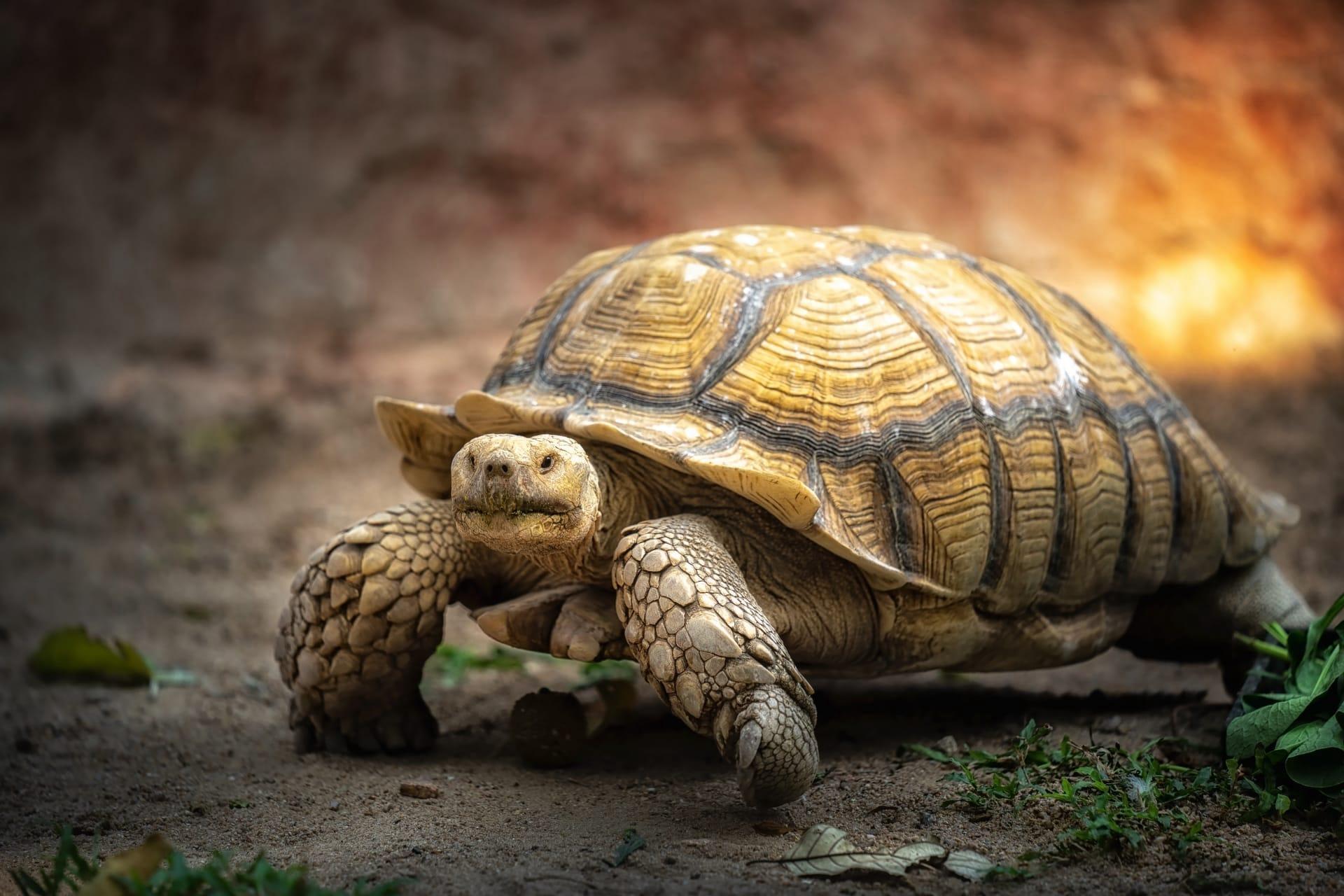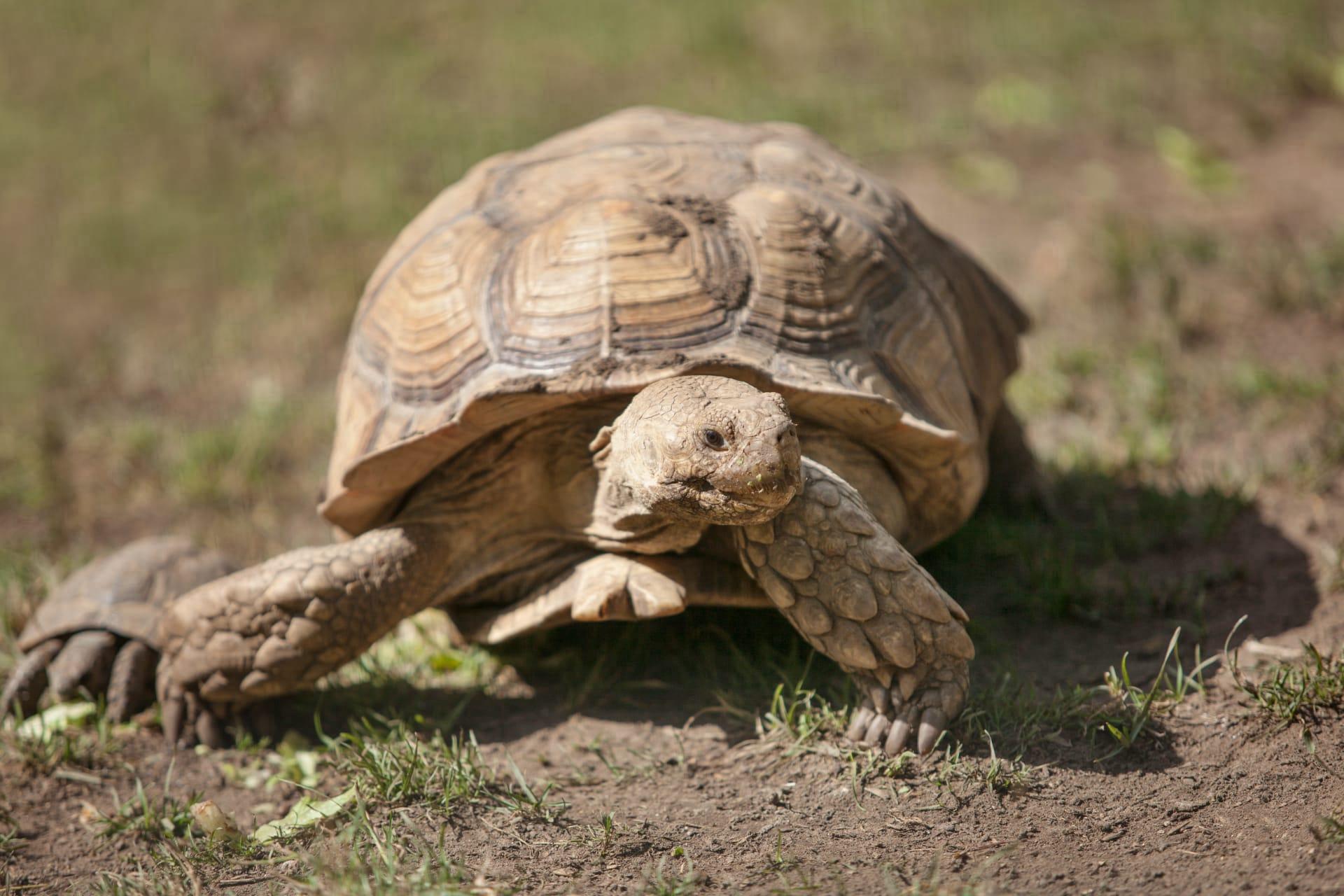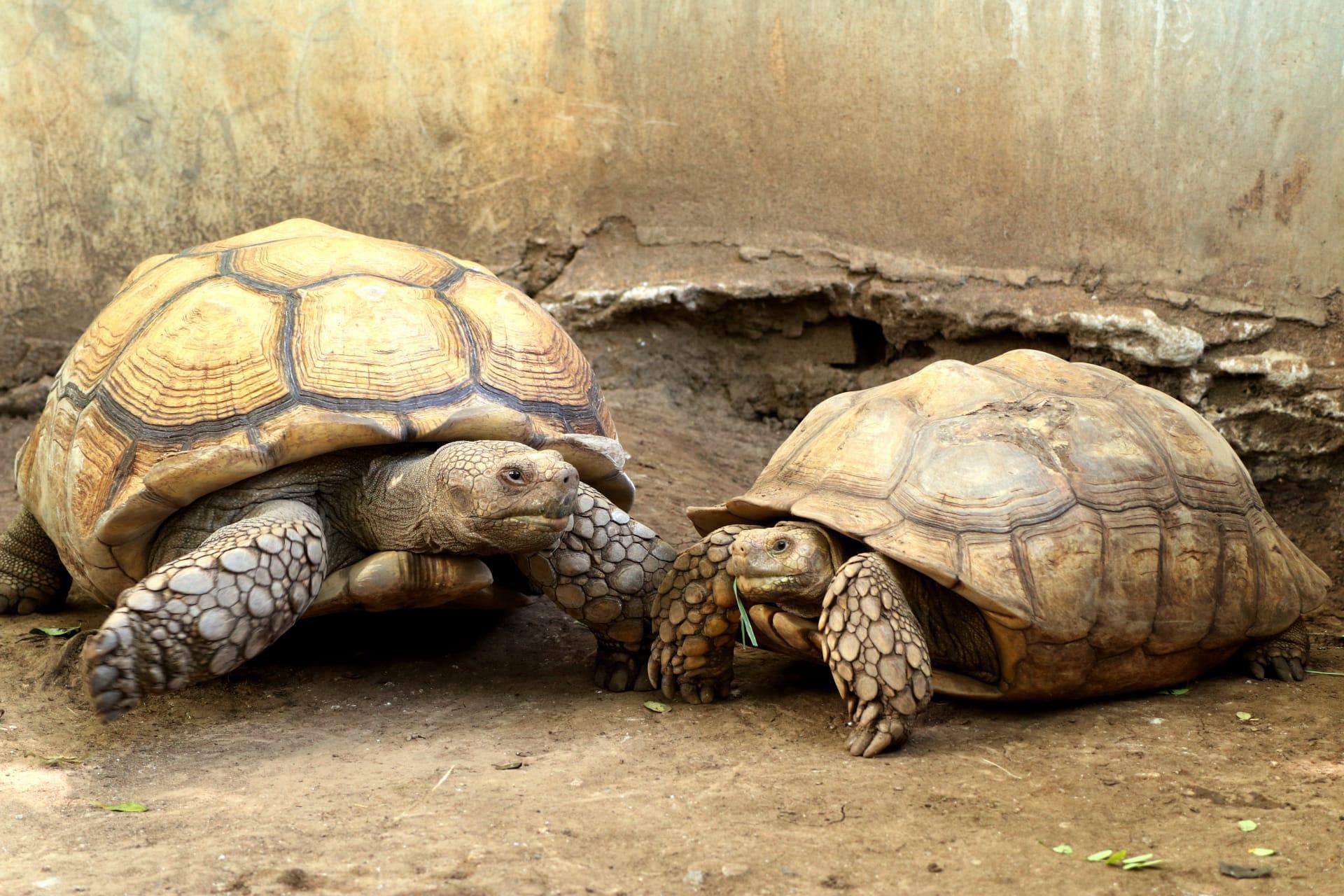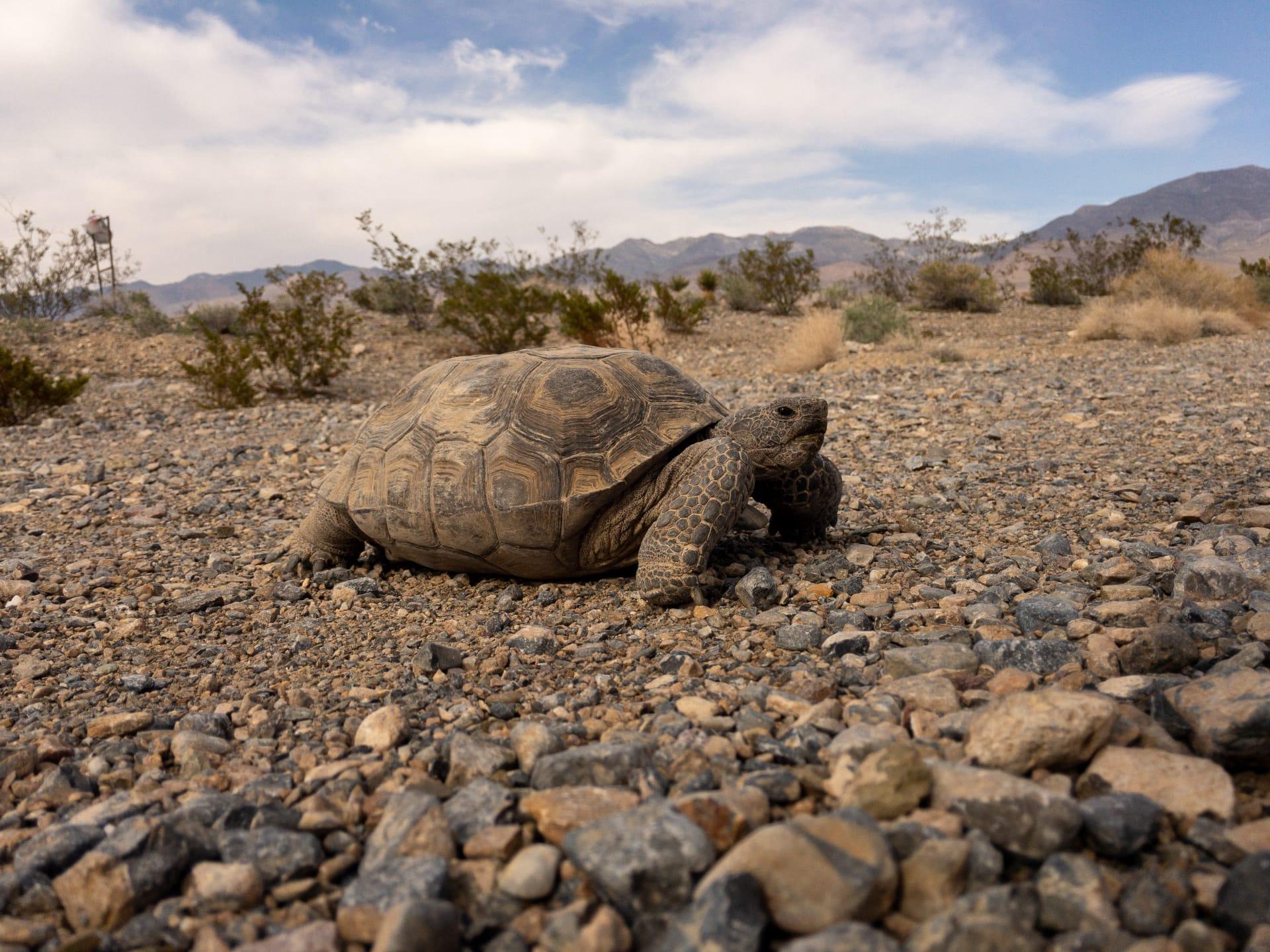Desert Tortoise Characteristics
- Home /
- Mini Encyclopedia /
- Animal /
- Desert Tortoise Characteristics
1
The Desert Tortoise, a fascinating creature residing in the arid landscapes, boasts a sturdy shell and stocky, well-adapted limbs for its harsh environment. Its shell, predominantly shades of brown and tan, acts as a formidable shield against predators and extreme weather. Adults can grow up to 10-14 inches in length and weigh between 8-15 pounds. Remarkably, their lifespan is quite extensive, with many living up to 50-80 years, and some even surpassing 100 years in captivity. This longevity speaks volumes about their resilience and adaptation to the desert life.
One of the Desert Tortoise's most remarkable organs is its bladder. This isn't just any ordinary bladder; it's a survival tool. In the arid desert, water is a precious commodity, and the tortoise's bladder can store up to 40% of its body weight in water. This incredible ability allows it to go for months, sometimes up to a year, without drinking. During droughts, the stored water can be reabsorbed to maintain hydration, a vital adaptation for survival in the harsh desert conditions where water is scarce.

2
Question: "What do Desert Tortoises eat and how does their diet affect their lifestyle?"
Answer: The Desert Tortoise is predominantly herbivorous, feasting on a variety of native grasses, wildflowers, and cacti. This diet is low in calories and nutrients, which influences their slow metabolism and sedentary lifestyle. They spend much of their time grazing slowly and digesting their fibrous food. This diet also plays a crucial role in their water intake, as many of the plants they consume have high moisture content, providing essential hydration in their arid habitat.

3
Desert Tortoises are not known for speed, but rather for their steady and deliberate movement. They can travel up to 0.2 miles per hour, which, though slow, is effective for their lifestyle in the vast desert. They are adept at maneuvering through rocky terrain, thanks to their strong, clawed limbs. This deliberate pace aligns with their energy-conserving lifestyle, necessary in their hot, energy-sapping environment.
In terms of hunting, the Desert Tortoise is more of a forager than a hunter. It primarily eats during the cooler parts of the day - early morning and late afternoon. Their feeding strategy is slow and methodical, reflecting their overall lifestyle. They rely heavily on their sense of smell to locate food, and their beak-like mouths are well-suited for tearing and consuming a variety of vegetation, including tough, spiny plants common in their habitat.

4
The Desert Tortoise thrives in a variety of desert habitats, including sandy flats, rocky foothills, and canyon bottoms. These environments are characterized by extreme temperatures, scarce water, and limited vegetation. The tortoise has adapted well to these conditions, with its burrowing habits providing shelter from the intense heat and cold. They spend up to 95% of their lives in these burrows, which play a critical role in their survival.
Reproduction is a slow process for the Desert Tortoise. They reach sexual maturity at around 15-20 years of age. Mating occurs primarily during the spring and fall, and females lay clutches of 4-8 eggs, which they bury in sandy nests. Incubation takes 90-120 days, and hatchling survival rates are low due to predation and harsh environmental conditions. This slow reproductive rate is one reason why their populations are vulnerable to disturbance.

5
Book: "The Desert Tortoise: Natural History, Biology, and Conservation" by Kristin H. Berry. This book, authored by a renowned herpetologist, provides an in-depth look into the life of the Desert Tortoise. Published in the United States, it delves into the biology, behavior, and the conservation challenges facing this species. Berry's work, spanning decades, offers a comprehensive view, making it an essential read for anyone interested in desert ecology and tortoise conservation.
Book: "Life in the Slow Lane: A Desert Tortoise Tale" by Conrad J. Storad. This engaging book, ideal for both children and adults, tells the story of a Desert Tortoise named Tick. Set in the southwestern United States, it combines factual information with a narrative style, offering insights into the tortoise's life and challenges in the desert. Storad's book, with its mix of storytelling and science, is an excellent introduction to the world of the Desert Tortoise.